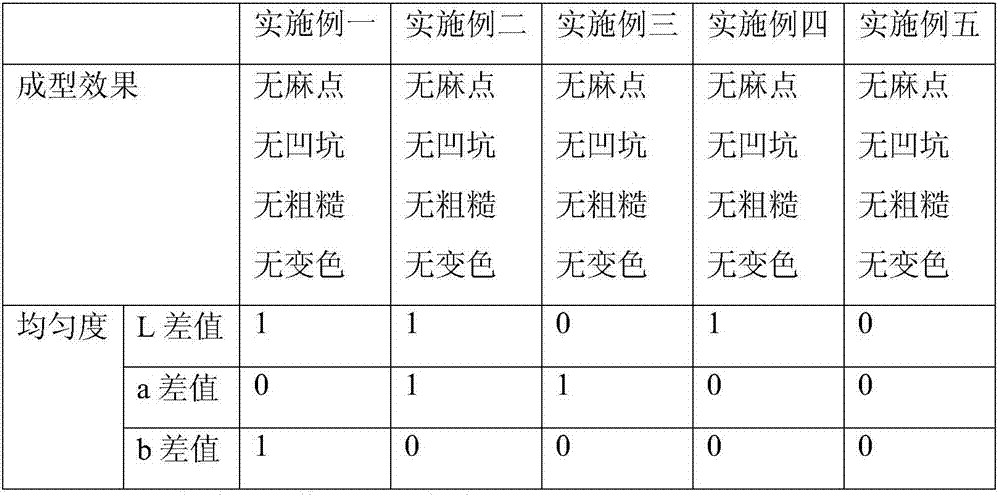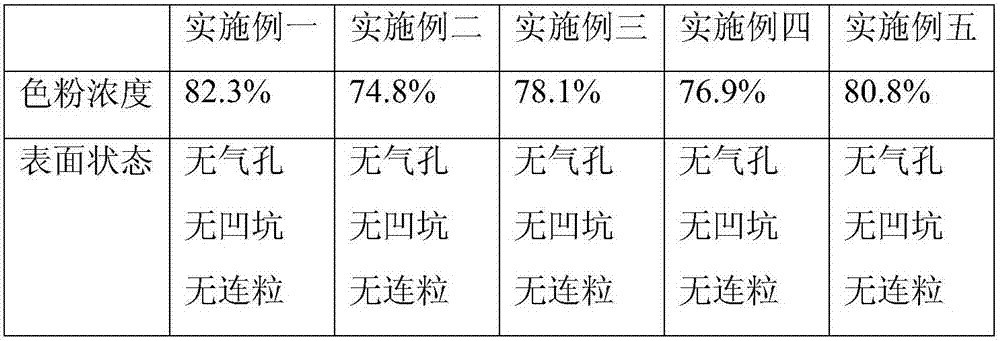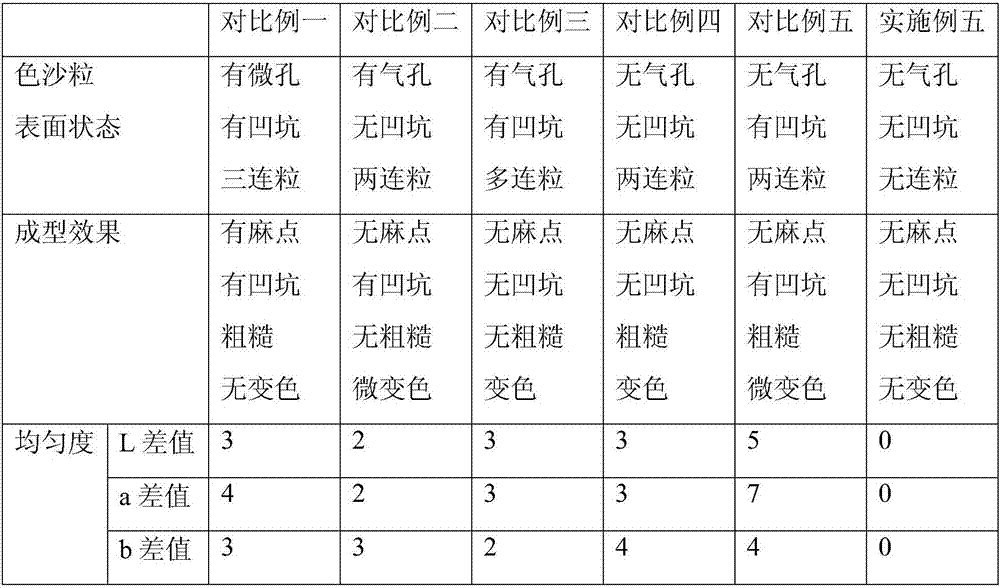Carrier-free color sand grains and preparation method thereof
A carrier-free, sand-grain technology, applied in the field of folding stool materials, can solve the problems of affecting the visual appearance of the folding stool, uneven coloring, poor pigment dispersion, etc., to eliminate the internal stress of the interface, change the dyeing performance, and increase the spacing. Effect
- Summary
- Abstract
- Description
- Claims
- Application Information
AI Technical Summary
Problems solved by technology
Method used
Image
Examples
Embodiment 1
[0038] (1) Select 5000 mesh silicate type ceramic toner cobalt pink, add silicon micropowder accounting for 1% of the total weight of the ceramic toner and chopped carbon fiber accounting for 1% of the total weight of the ceramic toner to compound and use as the toner;
[0039] (2) Set the temperature of the mixer to 90°C, mix 5 parts of polyethylene wax, 5 parts of ethylene bisstearamide, 3 parts of acrylic grafted polypropylene wax, 1 part of aminopropyltriethoxysilane, hyperbranched polyester 1 part is heated to a molten state in a blender;
[0040] (3) Divide 70 parts of the toner into 2 parts according to the weight, put them into the mixer in step (1) and stir evenly at 500 r / min under sealed conditions;
[0041] (4) After statically cooling to 70° C., the material obtained in step (2) is extruded into sheets by cooling rollers;
[0042](5) Pulverize the toner flakes obtained in step (3), pass through a 200-mesh sieve to obtain 200-mesh non-carrier-colored sand, and the...
Embodiment 2
[0044] (1) Choose 5000 mesh silicate type ceramic toner Victoria green, add silicon micropowder accounting for 5% of the total weight of the ceramic toner and chopped carbon fiber accounting for 5% of the total weight of the ceramic toner to compound and use as the toner;
[0045] (2) Set the temperature of the mixer to 110°C, mix 8 parts of polyethylene wax, 8 parts of ethylene bisstearamide, 5 parts of acrylic acid grafted polypropylene wax, and 3 parts of glycidylmioxypropyltrimethoxysilane in parts by mass. 3 parts, 3 parts of hyperbranched polyesters are heated to molten state in the blender;
[0046] (3) Divide 80 parts of the toner into 3 parts according to the weight according to parts by mass, put them into the mixer of step (1) in batches and stir evenly at 800 r / min under sealed conditions;
[0047] (4) After statically cooling to 80° C., the material obtained in step (2) is extruded into sheets by cooling rollers;
[0048] (5) Pulverize the toner flakes obtained i...
Embodiment 3
[0050] (1) choose organic toner azo yellow as toner;
[0051] (2) Set the temperature of the mixer to 100°C, mix 6 parts of polyethylene wax, 7 parts of ethylene bisstearamide, 4 parts of acrylic grafted polypropylene wax, 2 parts of methacryloxypropyltrimethoxysilane, 2 parts of hyperbranched polyester are heated to molten state in the mixer;
[0052] (3) Divide 75 parts of the toner into 2 parts according to the weight, put them into the mixer in step (1) and stir evenly at 600r / min under sealed conditions;
[0053] (4) After statically cooling to 75° C., the material obtained in step (2) is extruded into sheets by cooling rollers;
[0054] (5) Pulverize the toner flakes obtained in step (3), pass through a 200-mesh sieve to obtain 200-mesh non-carrier-colored sand, and then pass the crushed material that has not passed through the 200-mesh sieve through a 60-mesh sieve to obtain a 60-mesh non-carrier-colored sand. grains of sand.
PUM
 Login to View More
Login to View More Abstract
Description
Claims
Application Information
 Login to View More
Login to View More - R&D Engineer
- R&D Manager
- IP Professional
- Industry Leading Data Capabilities
- Powerful AI technology
- Patent DNA Extraction
Browse by: Latest US Patents, China's latest patents, Technical Efficacy Thesaurus, Application Domain, Technology Topic, Popular Technical Reports.
© 2024 PatSnap. All rights reserved.Legal|Privacy policy|Modern Slavery Act Transparency Statement|Sitemap|About US| Contact US: help@patsnap.com










